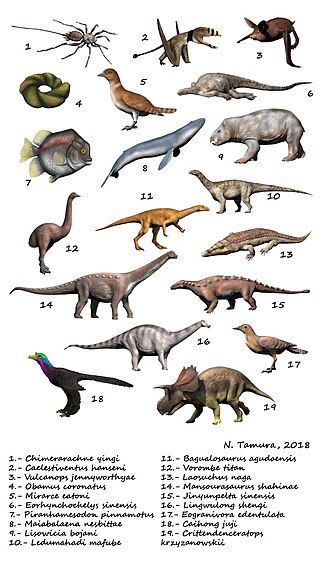
Maximilian I was King of the Romans from 1486 and Holy Roman Emperor from 1508 until his death in 1519. He was never crowned by the Pope, as the journey to Rome was blocked by the Venetians. He proclaimed himself elected emperor in 1508 at Trent, thus breaking the long tradition of requiring a papal coronation for the adoption of the Imperial title. Maximilian was the only surviving son of Frederick III, Holy Roman Emperor, and Eleanor of Portugal. Since his coronation as King of the Romans in 1486, he ran a double government, or Doppelregierung, with his father until Frederick's death in 1493.

Almost all water on Mars today exists as ice, though it also exists in small quantities as vapor in the atmosphere. What was thought to be low-volume liquid brines in shallow Martian soil, also called recurrent slope lineae, may be grains of flowing sand and dust slipping downhill to make dark streaks. While most water ice is buried, it is exposed at the surface across several locations on Mars. In the mid-latitudes, it is exposed by impact craters, steep scarps and gullies. Additionally, water ice is also visible at the surface at the north polar ice cap. Abundant water ice is also present beneath the permanent carbon dioxide ice cap at the Martian south pole. More than 5 million km3 of ice have been detected at or near the surface of Mars, enough to cover the whole planet to a depth of 35 meters (115 ft). Even more ice might be locked away in the deep subsurface.

Republicanism in the Netherlands is a movement that strives to abolish the Dutch monarchy and replace it with a republic. The popularity of the organised republican movement that seeks to abolish the monarchy in its entirety has been suggested to be a minority among the people of the Netherlands, according to opinion polls.

Paleontology or palaeontology is the study of prehistoric life forms on Earth through the examination of plant and animal fossils. This includes the study of body fossils, tracks (ichnites), burrows, cast-off parts, fossilised feces (coprolites), palynomorphs and chemical residues. Because humans have encountered fossils for millennia, paleontology has a long history both before and after becoming formalized as a science. This article records significant discoveries and events related to paleontology that occurred or were published in the year 2018.
In the Netherlands, the Vlag en Wimpel award is an honourable mention awarded by either the jury of the Gouden Griffel and Zilveren Griffel awards or the jury of the Gouden Penseel and Zilveren Penseel awards. The award is organised by the Collectieve Propaganda van het Nederlandse Boek. Starting in 2022, instead of Flags and Pennants, Bronze Griffels and Bronze Brushes will be awarded. The name change is intended to underscore the purpose of these awards: to highlight the best children's books.
This article lists a number of significant events in science that have occurred in the first quarter of 2023.



